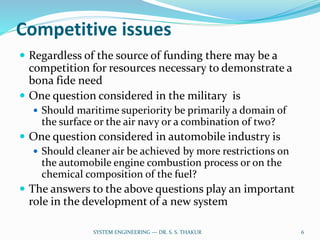The document discusses the role of needs analysis within the system development life cycle in system engineering, emphasizing inputs from operational deficiencies and technological advancements. It outlines examples of new system needs and competitive issues in sectors such as the automobile and military industries, along with different phases of operational analysis and requirement definition. Additionally, it stresses the importance of performance characteristics, constraints, and considerations for innovative implementation concepts in developing effective systems.















































